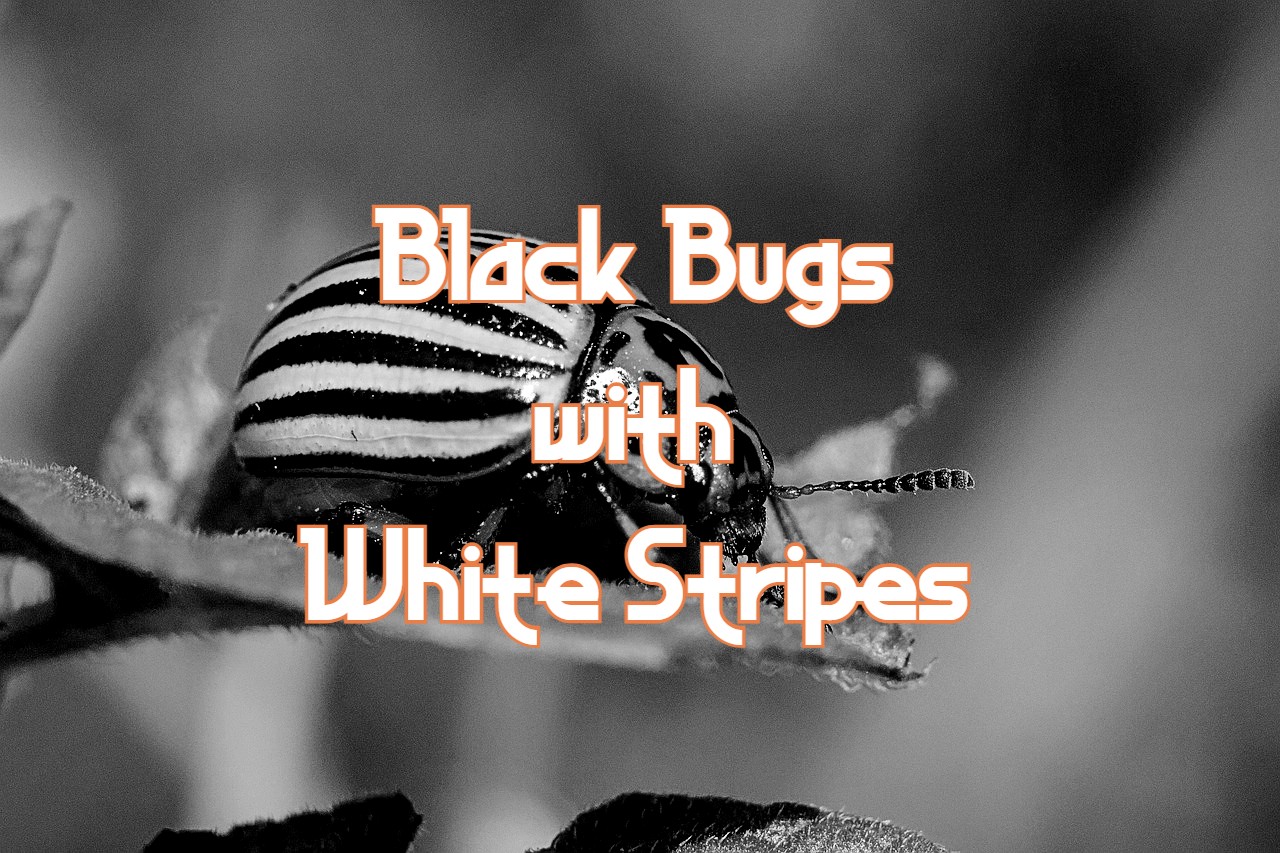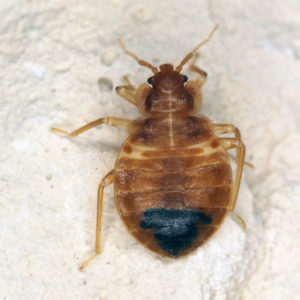Have you ever noticed small black insects crawling around your home or garden with distinctive white stripes on their bodies? These types of bugs, known as black bugs with white stripes, are actually quite common across North America and can be found in a variety of habitats. In this comprehensive guide, we’ll explore 15 of the most common black and white striped bug species, examining their key identification features, behaviors, and habitats. Read on to learn more about these visually striking insects!
What Causes the Striped Appearance?
The white stripes seen on black bugs are caused by pigmentation in the insect’s exoskeleton. The stripes are created by areas on the exoskeleton that lack the dark pigment melanin, revealing the naturally lighter color of the chitin beneath. The stripes can appear anywhere on the body, most often seen on the wings (elytra), thorax, abdomen, legs and antennae. The patterns are unique to each species.
Do the Stripes Serve a Function?
It’s believed the contrasting stripes serve as a defense mechanism through disruptive coloration, making it difficult for predators to spot the insects against complex backgrounds like vegetation or tree bark. The patterns may also serve as a warning, signaling to predators that the bugs may be toxic or distasteful.
When Do They Acquire the Striped Appearance?
The stripes first appear after the insect molts into the adult stage. Prior to this point most black and white striped bugs appear solid black brown or grey as juveniles. Once they reach full size and transition into adults, the signature striped patterns emerge. However, some species like the Ragweed Leaf Beetle have stripes in both adult and juvenile stages.
Do Both Males and Females Have Striped Patterns?
Yes, the striped appearance occurs in both male and female adults for all species The color patterns are not sex-specific traits Any noticeable differences between genders are very subtle and not related to the stripes themselves.
15 Common Black Bugs with White Stripes
Here are 15 of the most common and widespread black and white striped bug species found across North America
1. Pigweed Flea Beetle
This tiny black beetle has four variable white or yellowish stripes on its wings and thorax. A common agricultural pest, it feeds on pigweed and amaranth plants.
2. Pennsylvania Flea Beetle
Closely resembling the Pigweed Flea Beetle, this species has four white stripes and inhabits wetlands where it consumes shoreline vegetation.
3. Western Striped Cucumber Beetle
With three bold black stripes on a bright yellow-green body, this beetle attacks cucurbit crops like cucumbers, squash and melons.
4. Ragweed Leaf Beetle
As a specialist feeder on ragweed plants, this species has four to six variable stripes in black, yellow or tan.
5. Cottonwood Borer
The cottonwood borer beetle features black and white bands across its body, damaging many tree species as a destructive wood-boring pest.
6. Coreopsis Beetle
Fond of coreopsis and tickseed flowers, this four-striped beetle has interrupted stripe patterns in multiple color variations.
7. Banded Alder Borer
This black beetle has bold white stripes and bands running horizontally across its wings, thorax and legs.
8. Spruce Zebra Beetle
True to its name, this beetle has an intricate zebra-like pattern of black and white lines on its wing covers.
9. American Sand Wasp
A black and white striped wasp species with five abdominal stripes that preys on other insects that it provisions for its larvae.
10. Bald-faced Hornet
This large predatory wasp has three white stripes on the tip of its abdomen, nesting in conspicuous paper spheres.
11. White-bowed Smoothwing
A hoverfly mimicking a wasp, this species features six elegant white stripes with curved ends.
12. Oak Treehopper
Wingless but quite mobile, the oak treehopper has six stripes as an adult and often vibrant colors as a nymph.
13. California Digger-Cuckoo Bee
A specialist pollinator of wildflowers, this striking bee has five interrupted abdominal stripes.
14. Texas Leaf-cutter Bee
Nesting in the ground, the leafcutter bee is black with five bright white straight stripes across the abdomen.
15. White-Striped Tiger Beetle
A fast-moving iridescent green beetle hunter, it runs down prey with its long legs and has two jagged lateral white stripes.
Habitats and Behaviors
The black and white striped bugs covered here range from beneficial pollinators to occasional home invaders to serious agricultural and forest pests. They occupy diverse habitats including farms, grasslands, forests, deserts and wetlands. Most are active fliers capable of dispersing over long distances. Their feeding behaviors also vary widely based on species, with some acting as predators of other insects, while others feed exclusively on plants.
Significance for Humans
For agricultural producers, species like flea beetles and cucumber beetles can cause extensive damage to crops if left uncontrolled. Borers pose threats to living trees if infestations become severe. In the home, carpet beetles are most likely to impact humans by damaging materials like clothing and fabrics. Though a nuisance, the vast majority of striped bug species do not directly harm people, pets or structures.
With their bold contrasting colors, black bugs with white stripes always manage to grab our attention wherever they are encountered. Hopefully this guide has shed some light on the identity and ecology of some of the most commonly encountered striped insects we share our living spaces with! Let us know if you spot any others not covered here.

Need a Carpet Beetle or Bed Bug Inspection?

If you’ve spotted a carpet beetle in your home, or are having trouble differentiating it from bed bugs, it’s time to call a beetle exterminator. The experts at Rentokil know how distressing the sight of either of these insects can be. When you enlist our help, our licensed beetle exterminators will identify the type of bug you are dealing with and apply treatment to ensure the infestation is controlled. Contact us today to set up a bed bug inspection.
Serving Las Vegas – Henderson Nevada Metro
If you spot a tiny bug in your home, it can be difficult to identify what type of insect it is. It’s easy to panic and assume you have bed bugs, which is why it’s important to know how to identify this pest and carpet beetles, which are often confused for each other. These pests can look very similar to each other but exhibit very different behaviors. At Rentokil – Las Vegas, we are committed to helping our Southern Nevada customers understand the pest threats they may encounter. To avoid panicking over a could-be bed bug problem, it’s best to learn the differences between carpet beetles and bed bugs.
What Are Little Black Bugs With White Stripes?
FAQ
What are tiny black bugs with white stripes?
Adult carpet beetles grow up to 4mm long and have oval-shaped bodies with a striped shell of black, white, and yellow or orange. Their eggs are a white or cream color and an adult can lay more than 100 eggs at a time which can hatch anywhere between 10 days and a month.
Why do boxelder bugs suddenly appear?
Boxelder bugs tend to have high populations during hot, dry summers (records show their populations skyrocketed during the Dust Bowl in the 1930s), meaning a …Jul 18, 2023
What causes larder beetles in the house?
… the home may be associated with the presence of a dead rodent— mouse, rat, chipmunk or squirrel—within the walls of the house, or in an attic or crawl space
What is the fastest way to get rid of boxelder bugs?
-
Vacuum:Use a vacuum to remove boxelder bugs from inside your home, being careful not to crush them, as this can release a foul odor.
-
Seal Entry Points:Boxelder bugs enter homes through cracks and gaps. Seal any openings around windows, doors, pipes, and vents with caulk, weatherstripping, or screens.
-
Soapy Water Spray:Mix a tablespoon of dish soap with water in a spray bottle and spray the bugs directly. The soap disrupts their outer shell, leading to dehydration and death.
-
Remove Fallen Seeds:Boxelder bugs are attracted to boxelder trees, especially their seeds. Regularly remove fallen seeds to deter them.
-
Trim or Remove Boxelder Trees:If possible, consider trimming or removing boxelder trees near your home, as they are a primary source of attraction for these bugs.
Are there black and white striped bugs?
However, these species are generally found outdoors, feeding on plants. Now let’s compare some common tiny black and white striped bugs: While the common carpet beetle, black carpet beetle, and furniture carpet beetle are often found indoors, they don’t have the distinctive black and white striped pattern.
What are black bugs with white spots?
Common black bugs with white spots include the eastern click-eyed beetle, flea beetles, carpet beetles, and the hairy rove beetle. In North America, spotted lanternflies—non-native black bugs with white spots—have become a significant pest. The white-spotted bugs cause damage to ornamental shrubs, trees, and fruit trees.
Why do bugs have black stripes?
A bright ground color is specific to the bugs. Black stripes contrast its bright appearance and make it a similar species to other bugs with stripes. The wide black stripes of the species make it look like the bug has additional white stripes alternating between the black stripes.
How do you identify black bugs with white spots?
To identify black bugs with white spots, look carefully at the shape and size of the insect, its markings, and color. Observe if it has wings, how many legs it has, the size of its antennae, and check for any patterns or stripes. Additionally, pictures of black and white bugs can help with identification.
What is a black and white insect?
These tiny insects get their name from the patterns on their backs, which often feature black and white stripes, among other colors. You might encounter these small, rounded creatures, which measure about 3-5 millimeters in length, in various places around your home.
Do carpet beetles have black and white stripes?
Here are some features of the varied carpet beetle: Other beetles that exhibit black and white stripes include the Pennsylvania flea beetle, Western striped cucumber beetle, and Pigweed flea beetle. However, these species are generally found outdoors, feeding on plants. Now let’s compare some common tiny black and white striped bugs:
